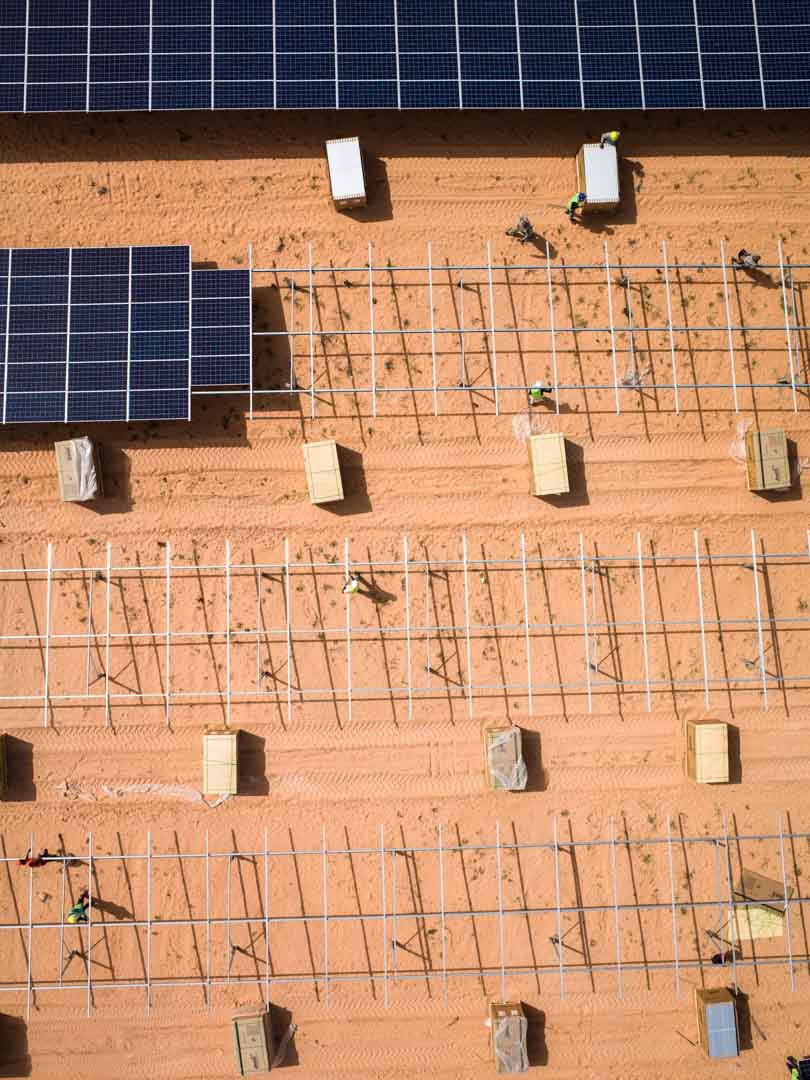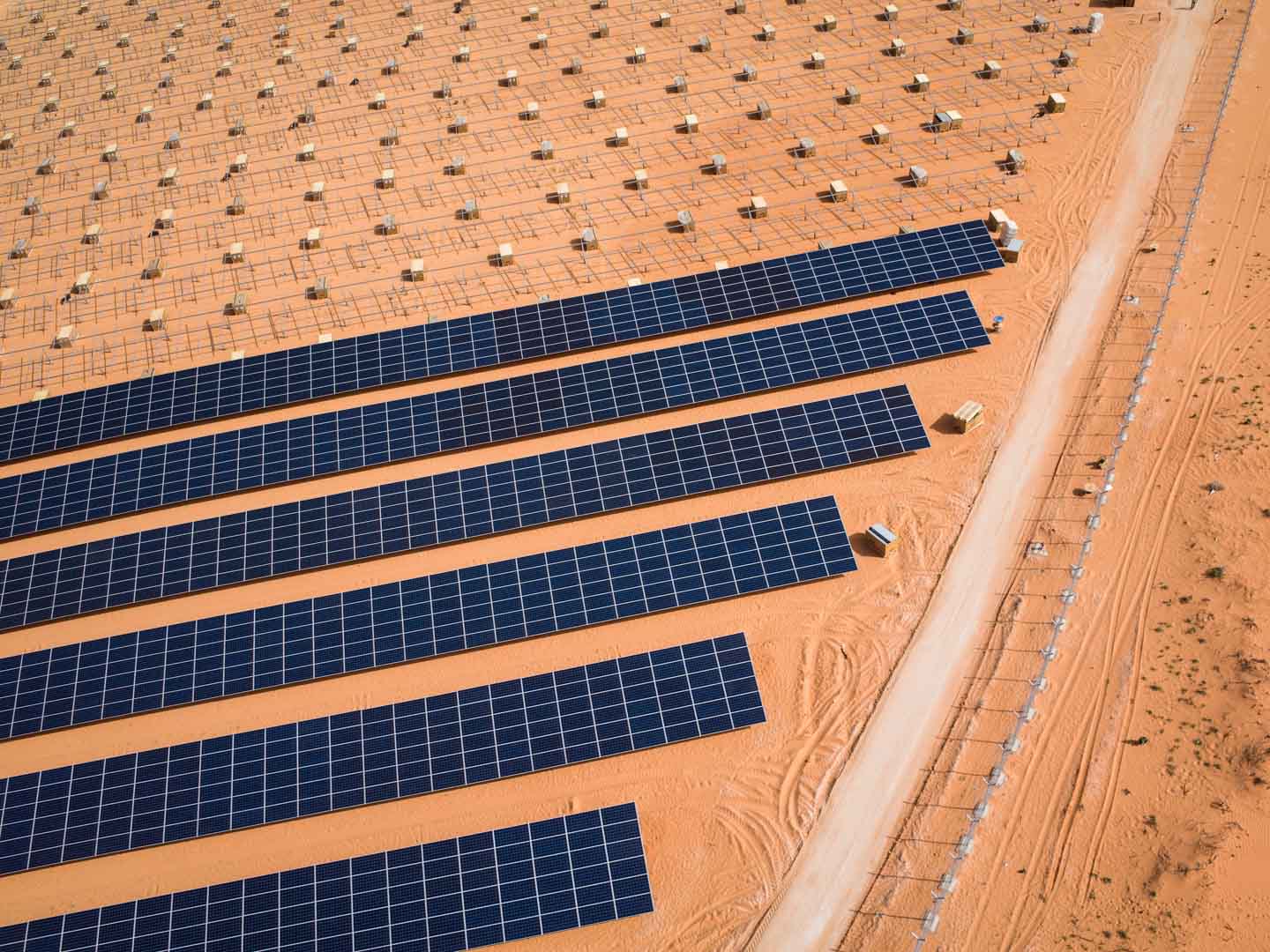Transfer of a modern technology to Mauritania
Plenty of sun, no rainfall and large areas that cannot be used for agriculture – as a desert country, Mauritania is predestined for generating solar energy, but this potential is hardly ever exploited. The electricity supply in the country is generated almost exclusively from fossil fuels and a not inconsiderable part of the electricity demand must be obtained from the neighbour states. The solar park near the capital Nuakschott makes use of the advantages of the desert state. More than 156,000 PV panels have been installed with a capacity of 50 MW and ensure the power supply for 110,000 people in the region.
Solar power generation not only creates permanent jobs in the region, but also makes the developing country independent of international energy and raw material prices. With this project, an important technology transfer towards climate-friendly energy production can be achieved in a country that would not be able to use its solar energy potential without the financial aid of the project.

Although the development of renewable energy sources is increasing, energy from fossil fuels is still a significant part of energy production worldwide. This is associated with the release of large amounts of carbon emissions. The use of solar energy is a good way to provide people around the world with renewable energy and reduce greenhouse gas emissions. Solar installations, implemented through solar projects, convert sunlight into electricity (photovoltaic) or heat (solar thermal). Even when the sky is cloudy, the solar thermal power plants generate heat and convert it into electricity. Photovoltaic projects use the photoelectric effect to convert sunlight into electricity.
The energy produced is typically fed into the national or regional power grid, reducing the share of fossil fuels in the electricity mix. In addition to reducing carbon emissions, solar projects also prevent the release of various pollutants associated with conventional power generation. Solar energy projects in the ClimatePartner portfolio are registered with international standards.
Explore our projects
Biochar for Climate Action, Healthy Soils, and Better Harvests

A certified climate project combined with additional commitment

Expansion of renewable energy generation in Asia

Ceramic water filters save CO2 and improve health

Improved cookstoves worldwide – for better health and cleaner air

A certified climate project combined with additional commitment

Powering access to renewable energy in Africa

A certified climate project combined with additional commitment

Restored ecosystems remove carbon

Turning degraded farmlands into healthy ecosystems

Improved cookstoves - better for health and the environment














